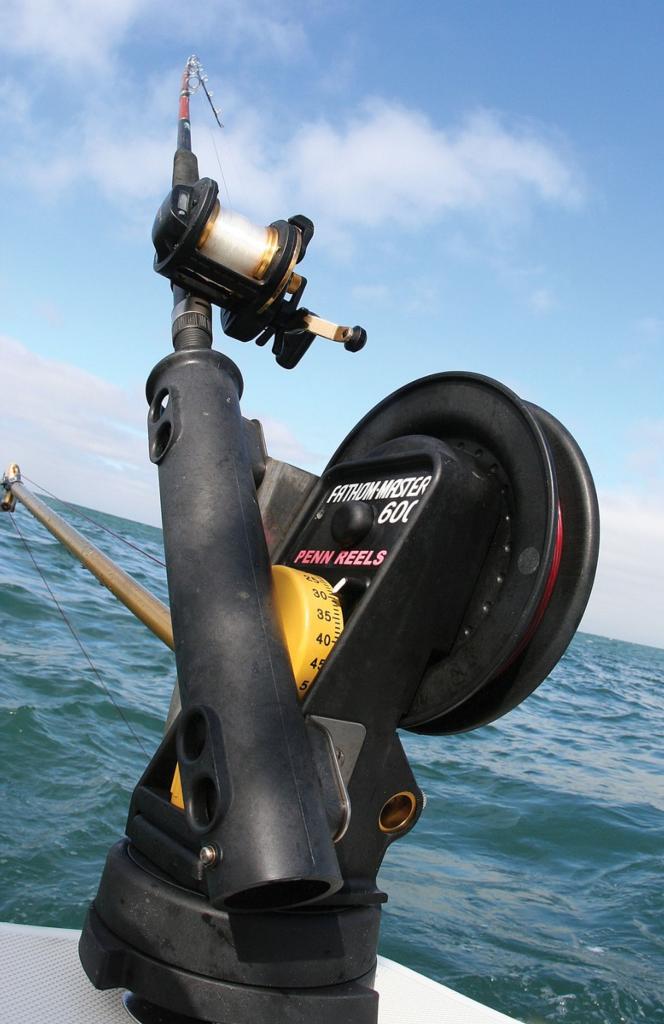Deep trolling
Dropping down deep boats smokers in many situations

When kingfish hunt the lower end of the water column, plunging baits to the target depth can prove more productive than trying to coax the fish topside. Savvy anglers will balance this strategy with a surface spread, but when the fish run deep, you’d better keep some groceries downstairs.
Most tournament boats sport twin downriggers, but deploying both is not always best. In rough conditions, strong current or crowded waters amid a tight tournament fleet, most would drop a single rigger. Fishing too deep in such scenarios heightens the risk of tangling downrigger weights when turning as well as crossing lines with other boats. Such risks are more easily accepted if the deep bite intensifies, so drop a second rigger when warranted.
Situations that automatically merit a double-deep approach include high-relief structures such as wrecks, reefs or steep ledges and thermoclines. Kings may lurk on either side, so watch the bottom recorder and position one deep bait below the break and one above.
Scaling back to a single rigger may be necessary if the deep bite just isn’t happening, or if reef rats like amberjack and barracuda ravage your baits.
“Everything in kingfishing is a draw-down process,” said Yamaha pro Robert Dawson of St. Petersburg, Fla. “You start broad and work in to find what they need.”
Indeed, spread design varies greatly with innumerable geographic and meteorological variables. For illustrative purposes, two basic arrangements offer a good starting point for deep trolling.
Single downrigger: Set the deep bait about 15 feet off the release clip and drop it to run a couple of feet above the bottom structure. Live blue runners or dead ribbonfish are good deep baits – subject to local preferences.
Complement the deep bait with a surface spread comprising two flatlines (run from gunnel rod holders or T-top “rocket launchers”) set at 30 and 60 feet, a short “prop” bait deployed 10 feet off the motors and a long “shotgun” bait positioned 100 feet from the boat.
 Double downriggers: Position one deep bait a few feet off the bottom structure and another midway through the water column. For example, in 60 feet of water, over a spot with 12 feet of vertical relief, drop one bait to about 45 feet and the other to 25. Start with one live and one dead bait. If either excels, double up on the hot flavor.
Double downriggers: Position one deep bait a few feet off the bottom structure and another midway through the water column. For example, in 60 feet of water, over a spot with 12 feet of vertical relief, drop one bait to about 45 feet and the other to 25. Start with one live and one dead bait. If either excels, double up on the hot flavor.
At the surface, keep a big bait in the prop wash at around 10 feet and another far back in the shotgun position around 100 feet. Go with one flatline and set this bait at about 50 feet, roughly halfway between the prop and shotgun baits. So arranged, the baits provide staggered coverage both horizontally and vertically.
In deep trolling scenarios, some move the release clip off the downrigger weight and re-rig it a foot or so up the line. Run your downrigger cable, where you replaced the standard cable with heavy mono or braided line to eliminate wire humming, to one of the clip’s attachment points. From the opposite side of the clip, attach the weight with a foot or two of 80-pound fluorocarbon.
If the weight gets hung in bottom structure, you can break the fluorocarbon and keep from losing your bait and rig. Also, when setting altered downriggers, you can leave the weight in the water while clipping the fishing line.